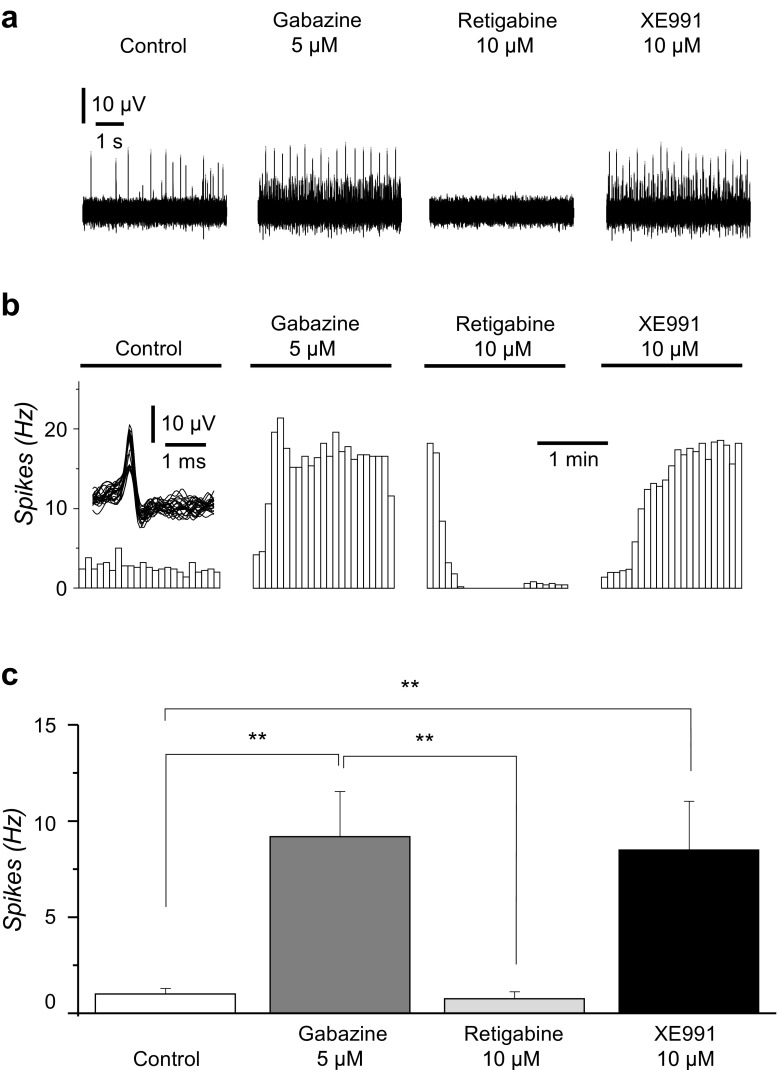Fig. 5.
Spontaneous unit responses recorded from CTR33Qn1 hiPSC-derived neurons plated in 24-well multi-electrode arrays (MEAs). a Exemplars of 5-s snapshots of raw data taken from one electrode (position 24) within one MEA well. The first recording (left) is in the absence of drugs. The subsequent recordings (right) are in the presence of GABAA receptor-antagonist gabazine (5 μM), Kv7 channel opener retigabine (10 μM) and Kv7 channel selective blocker XE991 (10 μM). b Histograms of spike rate versus time for unit responses detected from individual MEA electrodes. Four consecutive 120-s recording epochs are shown from two electrodes, position 24 (top) and position 43 (bottom). The first epoch is in the absence of drugs. The inset shows 25 superimposed units detected during the first epoch. Drugs were applied immediately before the recording. Gabazine (5 μM) was applied initially to increase spontaneous activity of CTR33Qn1 hiPSC-derived neurons. Retigabine (10 μM) eliminated spiking and XE991 (10 μM) restored spiking to a rate similar to that observed before introduction of retigabine. c Bar charts presenting means of spike frequency ± SEM measured in CTR33Qn1 hiPSC-derived neurons displayed significant difference, determined by paired Student’s t test, in the presence of gabazine, retigabine and XE991 (**p < 0.01) compared to the control in the absence of drugs. A total of 11/12 electrodes detected units in this well and all responded to retigabine. In 7 instances, activity returned in the presence of XE991

